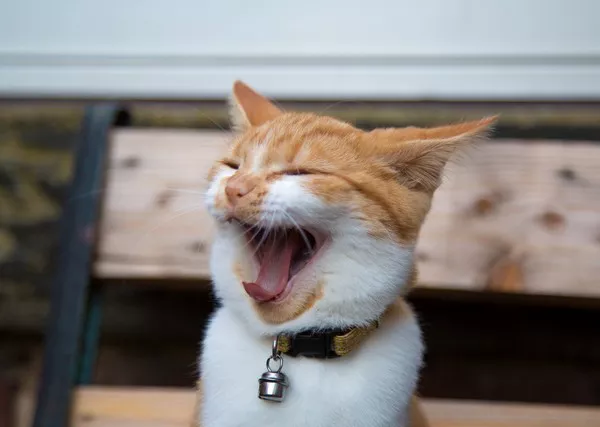Cats are known for their independent nature, and for many felines, the great outdoors is an irresistible playground. While keeping a cat exclusively indoors is a common practice for safety reasons, some cat breeds are well-suited to outdoor living and thrive in an environment where they can explore, hunt, and bask in the sunshine. In this comprehensive guide, we will explore the top 10 cat breeds that are particularly well-suited for outdoor living, considering factors such as their natural instincts, adaptability, and resilience.
Understanding the Outdoor Cat Lifestyle:
Before delving into the specific breeds, it’s essential to understand the outdoor cat lifestyle and the considerations that come with it. Outdoor cats have the freedom to roam, which can lead to increased exercise, mental stimulation, and a more natural way of living. However, it also comes with potential risks, including exposure to predators, traffic, and environmental hazards.
When considering allowing a cat outdoors, it’s crucial to ensure they are spayed or neutered, vaccinated, and equipped with identification, such as a collar with an ID tag and a microchip. Regular veterinary check-ups are essential to monitor their health and address any issues promptly.
Now, let’s explore the top 10 cat breeds that are well-suited for outdoor living:
Top 10 Cat Breeds Ideal for Outdoor Living
1. Norwegian Forest Cat:
Appearance: Known for their large size, bushy tail, and tufted ears, Norwegian Forest Cats have a semi-longhaired coat that provides protection against the cold.
Temperament: These cats are adaptable and independent, making them well-suited for outdoor environments. They are skilled hunters and climbers, embracing their natural instincts.
2. Maine Coon Cat:
Appearance: The Maine Coon is one of the largest domestic cat breeds, with a distinctive long, tufted tail, tufted ears, and a thick, water-resistant coat.
Temperament: Maine Coons are known for their friendly and sociable nature. They enjoy outdoor exploration and are often comfortable in various weather conditions.
3. Siberian Cat:
Appearance: Siberian cats have a dense, triple-layered coat that provides insulation against the cold. They come in various colors and patterns.
Temperament: Siberians are known for their adventurous spirit and love for the outdoors. They are agile climbers and skilled hunters, making them well-suited for an outdoor lifestyle.
4. Bengal Cat:
Appearance: Bengal cats have a distinctive spotted or marbled coat that resembles that of a wild leopard. Their sleek and muscular build reflects their athleticism.
Temperament: Bengals are energetic, playful, and enjoy interactive activities. Outdoor spaces provide them with opportunities to engage in physical exercise and satisfy their curiosity.
5. Manx Cat:
Appearance: The Manx is recognized for its distinctive taillessness or short tail. The breed can have a short or longhaired coat in various colors.
Temperament: Manx cats are known for their intelligence and adaptability. They often enjoy outdoor spaces where they can explore and showcase their hunting skills.
6. Turkish Van Cat:
Appearance: The Turkish Van is characterized by its semi-longhaired coat, colored tail, and strikingly patterned fur on the head and body.
Temperament: Turkish Vans are known for their love of water and are often confident and outgoing. They may appreciate outdoor environments where they can explore and possibly swim.
7. Abyssinian Cat:
Appearance: Abyssinians have a short, ticked coat that gives them a distinctive and agouti-like appearance. Their almond-shaped eyes convey a curious and alert expression.
Temperament: Abyssinians are highly active and enjoy climbing and exploring. Outdoor spaces offer them the chance to indulge their adventurous side.
8. Siamese Cat:
Appearance: Siamese cats are known for their sleek, short coat, striking blue almond-shaped eyes, and color-point pattern.
Temperament: Siamese cats are vocal, affectionate, and thrive on mental stimulation. While they may enjoy outdoor spaces, supervision is crucial to ensure their safety.
9. Balinese Cat:
Appearance: The Balinese is a longhaired variant of the Siamese, featuring a silky coat with color points and a plumed tail.
Temperament: Balinese cats are social and enjoy interaction. While they may appreciate outdoor spaces, their long coat requires regular grooming to prevent matting.
10. Scottish Fold Cat:
Appearance: Scottish Folds are known for their distinctive folded ears, which give them an owl-like appearance. They can have short or longhaired coats.
Temperament: Scottish Folds are typically calm and adaptable. While they may enjoy outdoor spaces, their ears’ unique structure requires protection from extreme weather conditions.
Considerations for Outdoor Living:
While the mentioned breeds are generally well-suited for outdoor living, individual cats may vary in their preferences and adaptability. Here are some considerations when allowing your cat outdoors:
Supervision:
Always supervise your cat outdoors, especially in unfamiliar environments. This helps ensure their safety and reduces the risk of encounters with other animals or hazards.
Identification:
Equip your outdoor cat with proper identification, including a collar with an ID tag containing your contact information. A microchip provides an additional layer of identification in case the collar is lost.
Vaccinations:
Keep your cat’s vaccinations up-to-date to protect against common feline diseases. Regular veterinary check-ups are essential to monitor their overall health.
Parasite Prevention:
Implement a parasite prevention plan to safeguard your cat against fleas, ticks, and worms. Consult with your veterinarian for suitable preventive measures.
Weather Considerations:
Be mindful of weather conditions, especially extreme temperatures. Provide shelter, shade, and access to fresh water to ensure your cat’s well-being.
Traffic Awareness:
If you live in an area with heavy traffic, consider the potential risks before allowing your cat outdoors. Ensure there are safe spaces for them to explore away from busy roads.
Conclusion:
Allowing a cat to enjoy the outdoors can enrich their lives, providing opportunities for exploration, exercise, and mental stimulation. The breeds mentioned in this guide are known for their adaptability to outdoor living, but it’s essential to consider each cat’s individual personality and preferences.
With proper supervision, identification, and attention to their well-being, outdoor living can be a rewarding experience for both you and your feline companion. Remember that safety should always be a top priority, ensuring that your outdoor cat enjoys a healthy and fulfilling life in the great outdoors.


























